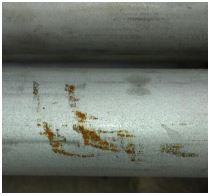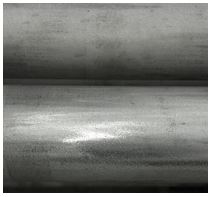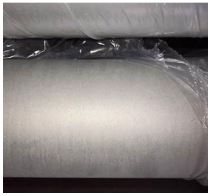Duplex, Austenitic, and Nickel-based alloys are resistant to atmospheric corrosion in most industrial environments. However, precautions need to be taken to avoid contamination of these alloys with non-corrosion-resistant materials or corrosive substances. Improper handling of these alloys could result in a negative impact on material performance.
Special care should be taken to avoid contact of these alloys with other non-corrosion-resistant materials such as contaminated metal inspection tables, metal forks, chains, and cables. Duplex, Austenitic, and Nickel-based alloys may be stored in direct contact with wood or on uncontaminated plastic while alloys such as CR 13 may experience pitting corrosion if stored in direct contact with wood.
Superficial Rust: Iron oxide deposited on the original surface of the pipe. With superficial rust, the surface of the pipe has not been disturbed and therefore the corrosion resistance has not been compromised. Superficial rust is not bonded to the surface of the pipe, therefore it can be removed with Scotch Brite, without removing any of the base metal of the pipe.
Embedded Rust: Rust that lies below the original surface of the pipe. The process of embedding it has created a pit or gouge in the pipe. This pit or gouge can act as an initiation site for localized corrosion of the pipe and as a stress riser where stress corrosion might initiate. (Figure A)
Superficial contamination with non-corrosion-resistant materials has no detrimental effect on cra materials. Although not a necessity, if this type of contamination occurs during transportation, handling or storage it can be removed with Scotch Brite pads. Careful judgment should be utilized to differentiate between superficial and embedded contamination.
CRA recommends the removal of embedded contamination be done with a #36 or finer grinding wheel that does not contain iron or iron oxides. The ground area should blend with the material without edges or contours and the operator must use caution to prevent excessive material removal and heat buildup (Figure B). The remaining wall thickness and OD should be verified with a UT gauge to ensure it does not fall below the minimum specification requirement. The OD at the deepest point of repair should also be verified with a micrometer to ensure it does not fall below the OD specification requirement. The mechanical remediation can be followed by a grit blast to ensure contamination has been removed and a uniform surface is visible (Figure C). The grit blasting level shall be in accordance with ISO 8501-1:2007. A copper sulfate solution can be applied to any area where contamination was present to ensure it has been removed completely.


Figure A: Pipe with embedded rust


Figure B: Pipe after remediation of embedded rust using a grinder


Figure C: Uniform surface of pipe visible after grit blasting